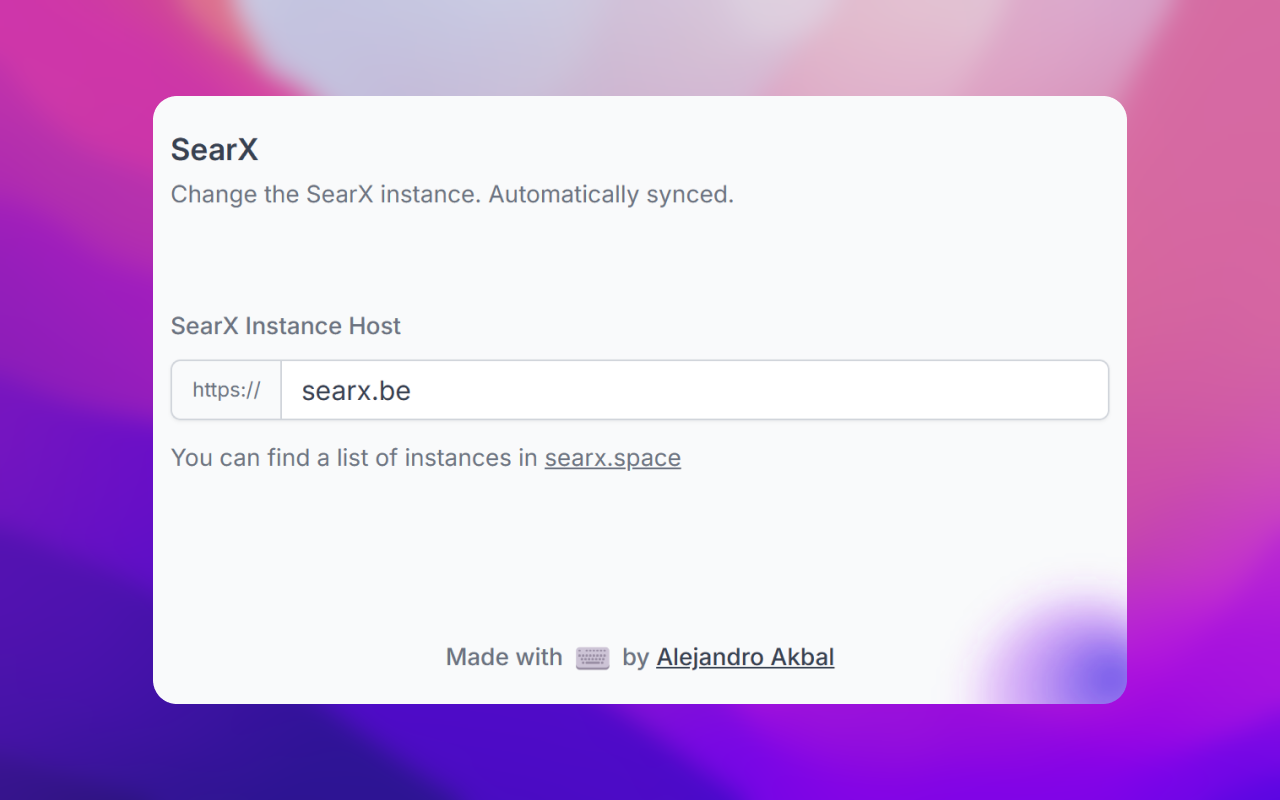A configurable lightweight browser extension that sets SearX as your default search engine.
- Privacy by Default: SearX doesn't track your searches.
- Install and Forget: Simply install the extension and SearX becomes your default search engine.
- Options: Effortless switch between SearX instances, setting you free from the need to fork or create a new extension each time.
- Synchronization: Use your browser's sync to match your options across different devices.
- SearXNG compatible: Works seamlessly with SearXNG instances
There are two main components to this extension:
- Browser extensions are not allowed to have dynamic search engines.
- Browser extensions are not allowed to redirect the default search engine.
This extension uses a workaround by always pointing search requests to a subdomain I own searx.akbal.dev.
This subdomain then redirects to a fake subdomain, which the extension CAN redirect from, searx-to-localhost.akbal.dev.
That's the magic! Don't worry about privacy, I don't log any requests, and the extension is open source.
- Auto-complete does not work. Seems like declarativeNetRequest rules don't take over on autocomplete requests.
- There's no Firefox version yet. For some reason, redirects are not working. (Help wanted!)
First, run the development server:
pnpm dev
# or
npm run devOpen your browser and load the appropriate development build. For example, if you are developing for the chrome browser,
using manifest v3, use: build/chrome-mv3-dev.
You can start editing the popup by modifying popup.vue. It should auto-update as you make changes. To add an options
page, simply add a options.tsx file to the root of the project, with a react component default exported. Likewise to
add a content page, add a content.ts file to the root of the project, importing some module and do some logic, then
reload the extension on your browser.
For further guidance, visit our Documentation
Run the following:
pnpm build
# or
npm run buildThis should create a production bundle for your extension, ready to be zipped and published to the stores.
The easiest way to deploy your Plasmo extension is to use the built-in bpp GitHub action. Prior to using this action however, make sure to build your extension and upload the first version to the store to establish the basic credentials. Then, simply follow this setup instruction and you should be on your way for automated submission!
If you want to manually zip the extension source code for submission, you can run the following:
git archive -o extension.zip HEAD
